Stardew Valley has always been synonymous with lots of items and plants. These and more make Stardew Valley sounds pleasant to the ears while on vacation. Trees in Stardew Valley are not just for decoration; many benefits can be received from them: syrup, resin, and tar. There are also a variety of fruits to choose from.
Stardew Valley possesses three genuine types of trees: pine, oak, and maple. Without a doubt, these kinds of trees are quite similar in appearance, but each has a different purpose. This article will enlighten you on how to best plant Stardew Valley trees conveniently and make them grow fast.
Tree Farm
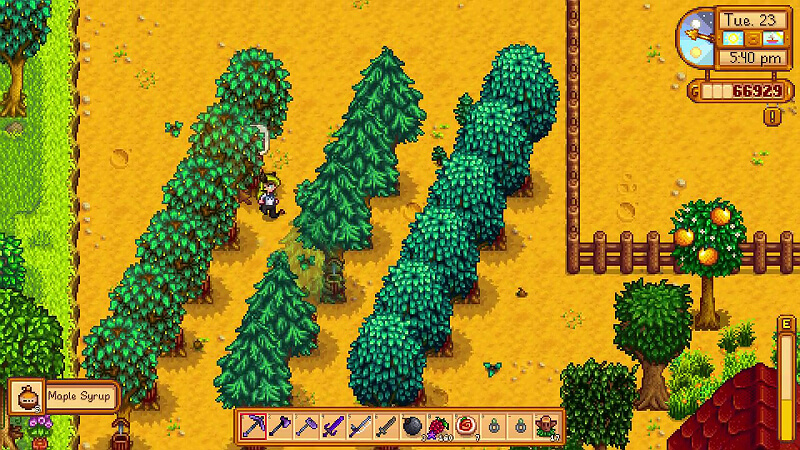
Starting up a tree farm is advisable in Stardew Valley because it is a money maker. When planting fruit trees, you need to exercise lots of patience, unlike regular trees. Also, tree farms come in handy because they offer more than one purpose. Although fruit trees can be harvested just once a year, regular trees have more than one purpose: sap, wood, and so on. Nevertheless, here is the list of regular trees and fruit trees available in Stardew Valley.
Regular Trees

Tree planting in Stardew Valley should be done in a simple TXTXTX pattern, and trees planted in every other square. The trees should be adequately so they don’t compete for air, sunlight, and so on. Make sure you clear the debris surrounding the trees.
For the most part, it takes just twelve days for them to mature.
- Maple. Stardew Valley maple trees can serve more than one purpose—they can provide wood, syrup, and maple seeds. Maple trees are easy to differentiate during summer, so we recommend you grow many. They release about 200 g of syrup every seven or eight days.
- Oak. This kind of tree is used for wood, resin, and acorns. They release about 150 g of resin every six to seven days. They grow out of acorns and are available everywhere.
- Pine. Pine trees can be used for wood, tar, and pine cones. They release about 100 g of tar every five days. They originate from the Conifers group, and they are prominent around the forest.
Taps for Oaks Resin, Pine Tar, and Maple Syrup
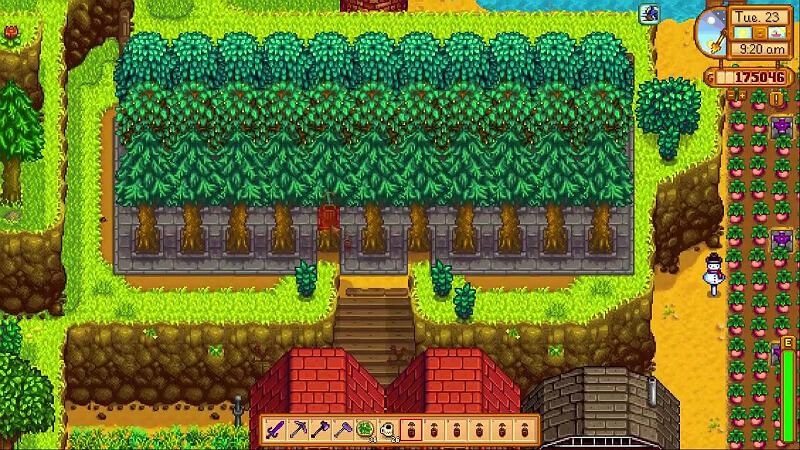
Stardew Valley tapper for Stardew Valley oak, maple, and pine trees come in handy for collecting the necessary resin, tar, or syrup you need. These trees are different even though they look similar, so crafting a suitable tap for each tree is paramount. Walk to the tree and place the tap at the square base to collect resin, syrup, or tar.
Wood Cutting
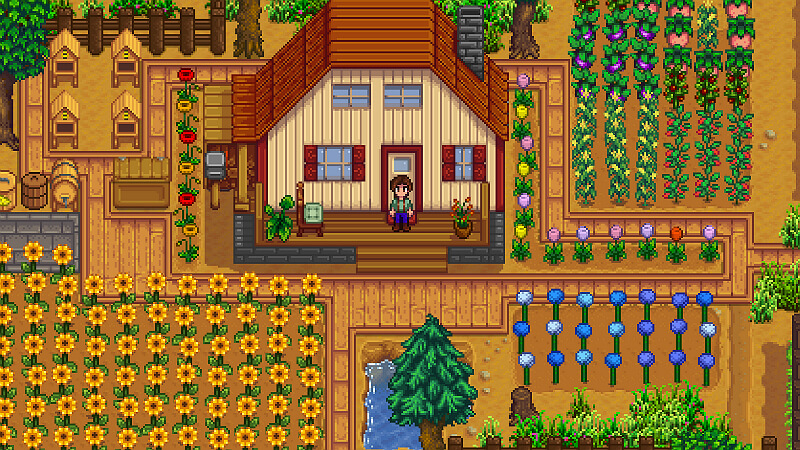
In little time, the trees Stardew Valley often drop their seeds, which signals an opportunity for you to plant your trees and use them to create objects such as batons. If your ax is good, it will take just a few swings to bring down a tree, which will reduce the amount of energy you need to use.
Fruit Trees
Planting fruit trees, such as apple, cherry, and apricot trees, in Stardew Valley is very convenient. Stardew Valley fruit trees are money makers. They can be harvested once a year, and each harvest will be abundant. Unlike the regular trees, fruit trees should be planted in a TXXTXXTXXT pattern with two spaces left in between. If you can’t afford a big orchard, then go for a smaller orchard.
- Apricot. These trees bloom during the spring and produce fruit every day. A piece of good-quality apricot sells for 100 g. At Pierre’s General Store, a sapling sells for 2 000 g.
- Cherry. Cherry trees bloom during the spring and produce fruit every day. A piece of good-quality cherry sells for 160 g. At Pierre’s General Store, a sapling sells for 3,400 g.
- Orange. These trees bloom during the spring and produce fruit every day. A piece of good-quality orange sells for 200 g. At Pierre’s General Store, a sapling sells for 4,000 g.
- Peach. Peach trees bloom during the spring and produce fruit every day. A piece of good-quality peach sells for 280 g. At Pierre’s General Store, a sapling sells for 6,000 g.
- Apple. These trees bloom during the spring and produce fruit every day. A piece of good-quality apple sells for 200 g. At Pierre’s General Store, a sapling sells for 4,000 g.
- Pomegranate. These trees bloom during the fall and produce fruit every day. A piece of good-quality pomegranate sells for 280 g. At Pierre’s General Store, a sapling sells for 6,000 g.
Special Trees
- Mushroom. This kind of tree doesn’t grow just anywhere. They are relatively scarce.
- Palm. These trees are available in the Calico Desert. They contain coconuts only with no sap or seeds.
How to Grow Trees in Stardew Valley?

Planting Stardew Valley trees is quite easy and simpler than it sounds. You may think that these giant trees are grown in complex ways, but that’s not true.
The first thing to do is decide which kind of tree you want to plant. We recommend planting every available sapling you can get your hands on. Even though they are not as profitable as crops, they are still money makers. Also, these trees’ produce is very similar. If you are profit-oriented, then we suggest going for the trees with the highest profit rate.
You can mix trees with crops in your greenhouse. Plant the trees on empty tiles on the border. Also, trees in the greenhouse reproduce on their own all year round, so why not get busy and utilize any space left in the area?
How do we grow these trees?
Well, it’s quite easy! Purchase any sapling you want at Pierre’s General Store and then plant it on your farm. There should be at least eight empty tiles around each tree to enable it to grow properly. If you’re planting many trees in a row, leave a gap you of at least two tiles.
Growth Rate

Each day, a tree grows 20%, especially if it’s not during the winter season. However, a tree within a three-by-three grid of another full grown tree will definitely not grow well, even if it reaches the sapling stage. Growth varies, and some trees reach maturity within eighteen days. Others take thirty-one to forty-six days to reach maturity.
A fruit tree takes just twenty-eight days to start producing fruit and produces them every single day. These fruits can be sold or used for recipes.
All in all, tree farming is just as simple as it sounds. Give it a try!



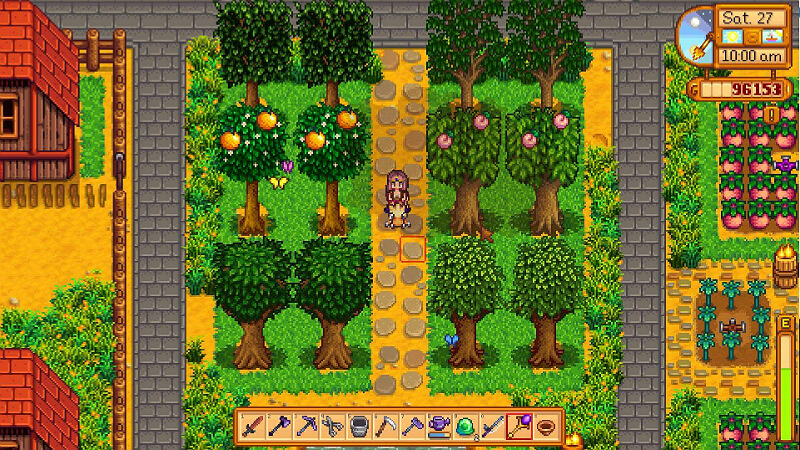

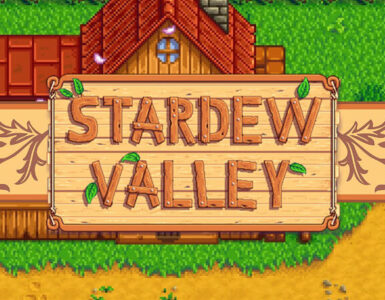

Add comment